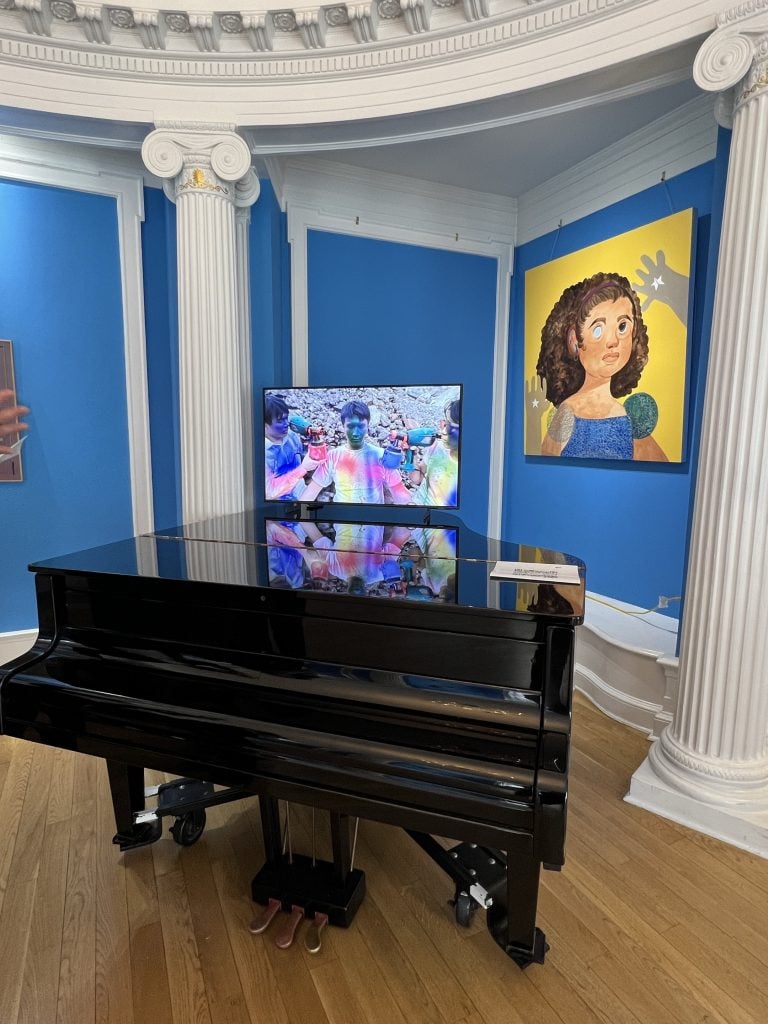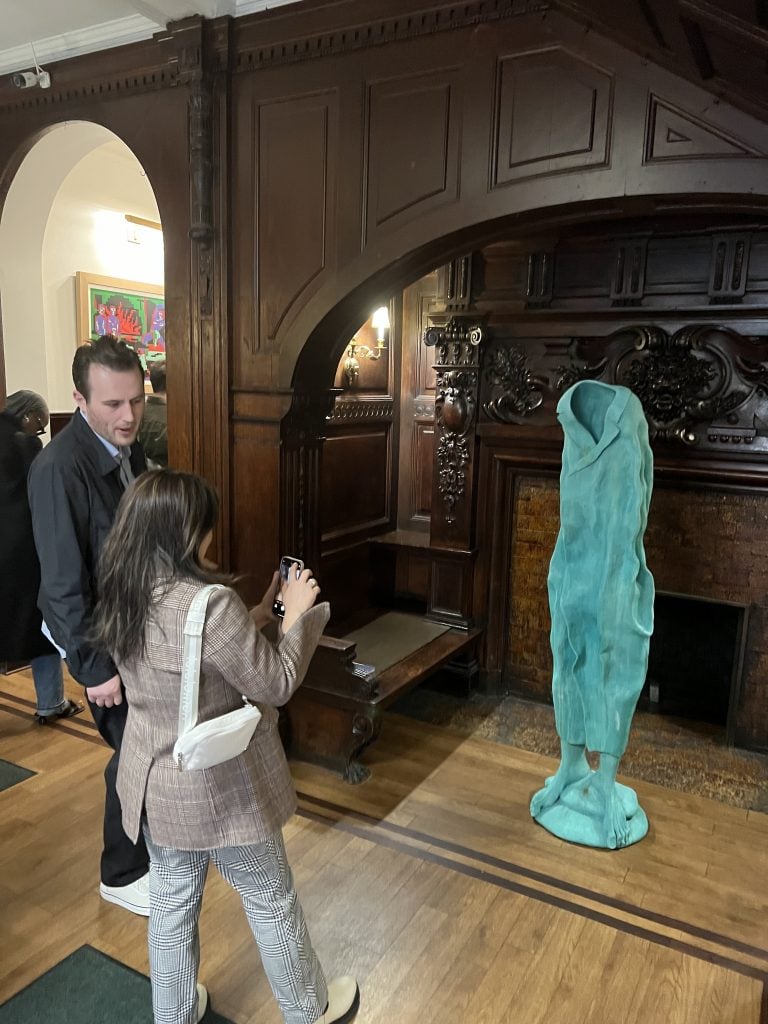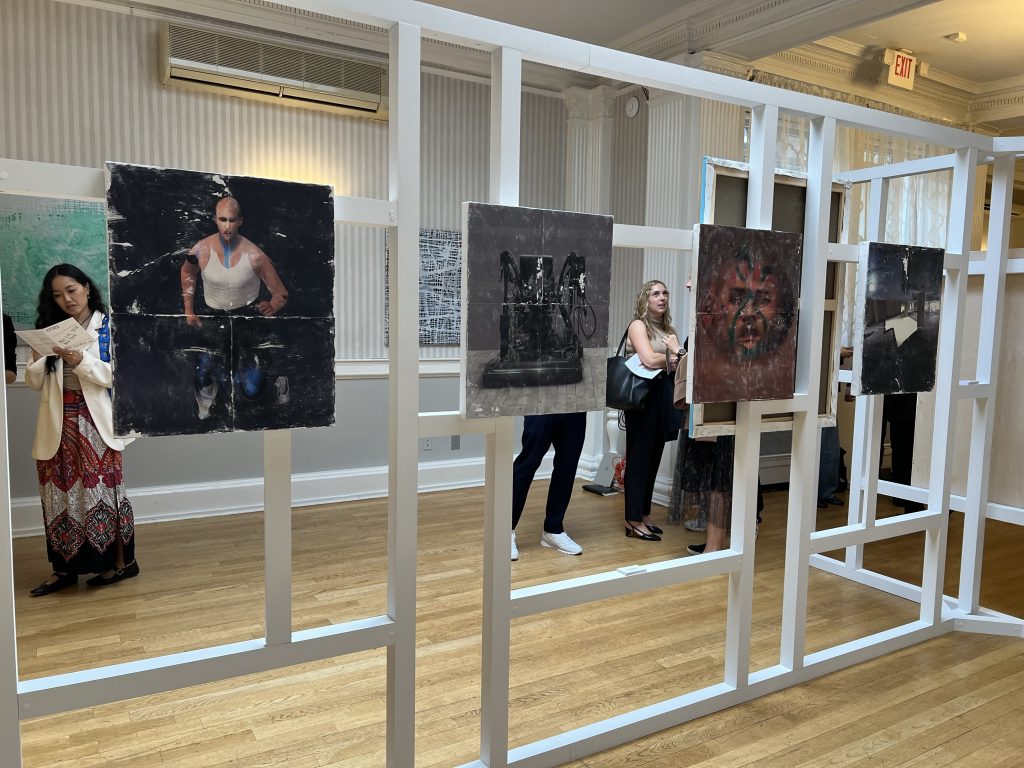Art World
What Is Esther? A Mysteriously Named Event Experiments with What an Art Fair Can Be
The mood was buoyant at the debut of New York's newest and most unusual fair, even if sales were slow in coming.

The mood was buoyant at the debut of New York's newest and most unusual fair, even if sales were slow in coming.

Katya Kazakina

What is Esther?
That question kept popping up as collectors and advisors arrived on Tuesday at the Estonian House, a slender French Beaux-Arts building on East 34th Street in Manhattan, for the city’s newest art fair.
The brainchild of two Estonian art dealers, Margot Samel (who is based in New York) and Olga Temnikova (the capital of Tallinn), Esther brings together 26 galleries, including some from countries that are rarely represented at trade shows in New York. Several hail from the former Soviet bloc, including Latvia, Georgia, Romania, and of course, Estonia. They are joined by New York-based colleagues like Andrew Kreps and Simone Subal, as well as dealers from Norway, Italy, Germany, and Shanghai.
“These are our friends, people we’ve long admired and collaborated with,” Samel said. “For us, it is an experiment in terms of what an art fair can do.”

Jesse Wine, O Do Rot Coat Roast Aortic Actions Tornados Consortia Rodin’s Coat (2024), presented by Modern Institute at Esther. Photo by Katya Kazakina
The unfamiliar venue set the tone: The landmarked townhouse is the kind of Old World place where you find wallpaper and mahogany panels, crystal sconces and grand pianos; the bar serves Estonian beer and pastries. The Estonian Education Society has occupied the building since 1940, publishing a newspaper, hosting a radio show, and offering language programs for children.
“There was a sense of discovery, starting from the physical space,” said Lowell Pettit, an art advisor who stopped by early on Tuesday. “Aren’t we all thirsting for discovery?”
The building’s communal history offers a perfect framework for an art fair focused on collaboration. Unlike Frieze New York, a corporate art fair with a white-walled booth for each exhibitor, Esther participants share rooms, hallways, and walls—which, in one case, is a porous, latticework structure, through which artworks can be spied.
A 6-foot-tall green coat made of ceramic and copper, empty inside—a sculpture that’s missing its subject—greeted visitors in an alcove near a staircase. It’s by Jessie Wine, presented by Glasgow’s Modern Institute gallery, and priced at $40,000.
Painted porcelain sculptures by a Latvian duo, Skuja Braden, sat atop a billiard table (via Milan and New York’s Kaufmann Repetto, at prices from €7,000 to €16,000, about $7,500–$17,100), and Oliver Herring’s video of Chinese youth spraying paint and glitter was displayed on a grand piano (Shanghai’s Bank gallery, $18,000).
There was no formal application process, Samel said. Information about Esther traveled by word of mouth. The organizers wanted to keep the fair affordable: just $1,500 per gallery, or “the cost of a plug at a major art fair,” she said.
(A small booth at next week’s Independent, for example, goes for $16,000; meanwhile, galleries at Frieze New York this week pay $55,000 to $100,000 for a booth).

Transfer paintings by Vladislav Markov presented by Management Gallery at Esther art fair. Photo by Katya Kazakina
“It’s cheap, and the context is great,” said New York dealer Anton Svyatsky, whose Management gallery brought small pigment-transfer paintings by Vladislav Markov, priced at $3,000 each. “Because Margot and Olga are running it, as dealers they know what other dealers want from a fair. It’s about meeting new collectors.”
The opening day drew avid collectors like Lenore and Herbert Schorr, Museum of Modern Art trustee Jill Kraus, and Jonathan Travis, the real estate broker behind the Tribeca gallery boom.
“I like quirky,” said Kraus, as she worked her way through the maze. “I am just having a hard time with the map.”
Elizabeth Dee, the co-founder of Independent, where several Esther galleries are showing next week, praised the communal spirit of the fair, which welcomed its guests with a mat spelling out the event’s name. (It was selected by its organizers for its various allusive qualities.)
“They put the art first, instead of focusing on their physical boundaries,” Dee said. “Their curatorial approach prioritized how the artworks interacted, regardless of their gallery affiliation.”

Painted porcelain sculptures by the Latvian duo Skuja Braden, atop of a billiard table at Esther art fair. Photo by Katya Kazakina
Whether the fair succeeds for dealers from an economic perspective remains to be seen. So far, sales have been slow, despite relatively low prices. But sales are just part of Esther’s stated purpose, according to its founders, who see it as a place for community gathering via talks, book launches, and dinners.
“It’s an art fair, of course, and we want people to do well and sell works,” Samel said. “But we don’t want it to be centered around just financial transactions. At least with the overhead we presented to the galleries, it doesn’t take much to break even.”
Svyatsky remains optimistic, despite selling only one painting so far.
“It’s low risk,” he said. “Considering where the market is right now, any sale at all is great.”